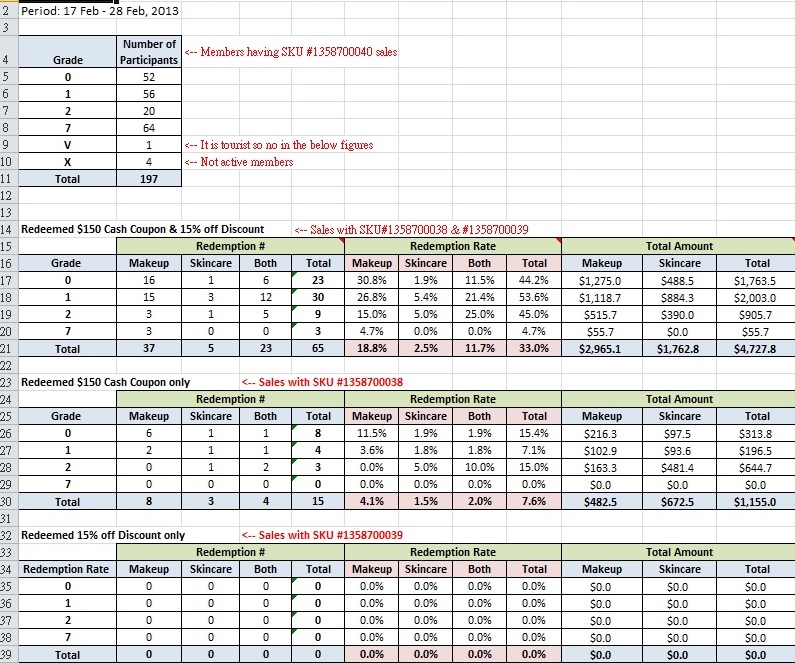Unlock a world of possibilities! Login now and discover the exclusive benefits awaiting you.
- Qlik Community
- :
- All Forums
- :
- QlikView App Dev
- :
- QV's ability on regular reports
- Subscribe to RSS Feed
- Mark Topic as New
- Mark Topic as Read
- Float this Topic for Current User
- Bookmark
- Subscribe
- Mute
- Printer Friendly Page
- Mark as New
- Bookmark
- Subscribe
- Mute
- Subscribe to RSS Feed
- Permalink
- Report Inappropriate Content
QV's ability on regular reports
We have to generate lots of regular reports in Excel format and sending to users by email accordingly to schedule like weekly, monthly and yearly. Some of the reports have a bit formatting requirement.
We prefer QlikView rather than Cognos because we don't want to maintain data warehouse. We just wonder if QlikVIew could be able to generate regular reports like Cognos. (We heard that QlikView is not good at regular reporting even with the help of NPrinting).
Please kindly share your experience in using QlikView. Thanks!

- Mark as New
- Bookmark
- Subscribe
- Mute
- Subscribe to RSS Feed
- Permalink
- Report Inappropriate Content
Hi,
we have the same requirement here, only we need the reports in pdf_format - to be printed, sent by email or just saved for further processing.
=> With pdf, QlikView is okay. The structure of the reports can be created in a QlikView_app and it can be automatically generated exactly like that, as often as you want.
<=> I think with Excel, that is a bit more complicated. There are tools that can automatically export QlikView data to Excel, but then you'd end up with a brand-new Excel file every time. When it comes to some "excel-internal" formatting, that will be a bit tricky. I have no experience there, I don't know if some tool enables you to tell ´QlikView to use a kind of stylesheet to apply the formatting.
=> You might be able to use formulas in a pre-formatted Excel file to just copy the contents from such a report, or
use some VBA to do the formatting.
Best regards,
DataNibbler
- Mark as New
- Bookmark
- Subscribe
- Mute
- Subscribe to RSS Feed
- Permalink
- Report Inappropriate Content
Hi,
You are correct that QlikView itself is not a great report writer. It's OK but report writing is not one of it's strengths. QlikView focuses more on the ability to drill through and analyse the data.
There are a number of products which bolt onto QlikView to provide superior reporting functionality - NPrinting, QV Report and CIA to name a few.
I use NPrinting as you can build templates in Excel, Word, Powerpoint, PixelPerfectPDF or HTML. Into these templates you can place charts, tables and text from multiple QlikView apps at the same time.
The scheduler allows you to launch several different tasks:
You can reload/refresh your QlikView data and populate your templates with fresh information.
You can also automatically import a list of users that you wish to send the reports to.
Macros can be triggered.
Filters functionality allows you to take different cuts of your data to build output for many different users.
The output can be sent as part of a schedule to a folder, Google Drive or as an email attachment.
Regards,
Neil
- Mark as New
- Bookmark
- Subscribe
- Mute
- Subscribe to RSS Feed
- Permalink
- Report Inappropriate Content
Thanks DataNibbler annd Neil!
- Mark as New
- Bookmark
- Subscribe
- Mute
- Subscribe to RSS Feed
- Permalink
- Report Inappropriate Content
Hi, IT Admin.
You are welcome.
Please can you close your post as answered by clicking on the Correct and Helpful buttons. This will indicate to others that the replies were useful to you and make sure you don't continue getting responses months and months from now.
Thanks,
Neil
- Mark as New
- Bookmark
- Subscribe
- Mute
- Subscribe to RSS Feed
- Permalink
- Report Inappropriate Content
Hi neil gulliver,
Can you please explain this part?
"The scheduler allows you to launch several different tasks:
You can reload/refresh your QlikView data"
Is this done through EDX? If so can you please explain how to establish a connection between the NPrinting scheduler with QV's Publisher. This can be useful in reloading fresh data to generate latest reports.
Thanks,
Palak
- Mark as New
- Bookmark
- Subscribe
- Mute
- Subscribe to RSS Feed
- Permalink
- Report Inappropriate Content
Hi, Palek.
NPrinting has it's own scheduling system that you can use. Not only can it run NPrinting tasks but it can run a QlikView reload too.
If you have Publisher you can create an NPrinting trigger file. To plagiarize something Steve Dark wrote recently on Publisher:
You could use Publisher to fire an NPrinting request simply by scheduling an External Task in Publisher to fire a batch file that creates the .request file for NPrinting. You could also create the .request file from a QlikView reload by loading the required XML into a table in QlikView and using a STORE command to a .request file. Note that the column name of the table would need to be the first line of the XML (as you can not suppress the column header with the STORE statement).
Regards,
Neil
- Mark as New
- Bookmark
- Subscribe
- Mute
- Subscribe to RSS Feed
- Permalink
- Report Inappropriate Content
I've posted a response to Steve's post to follow up on this. Thank you neil gulliver.
Palak